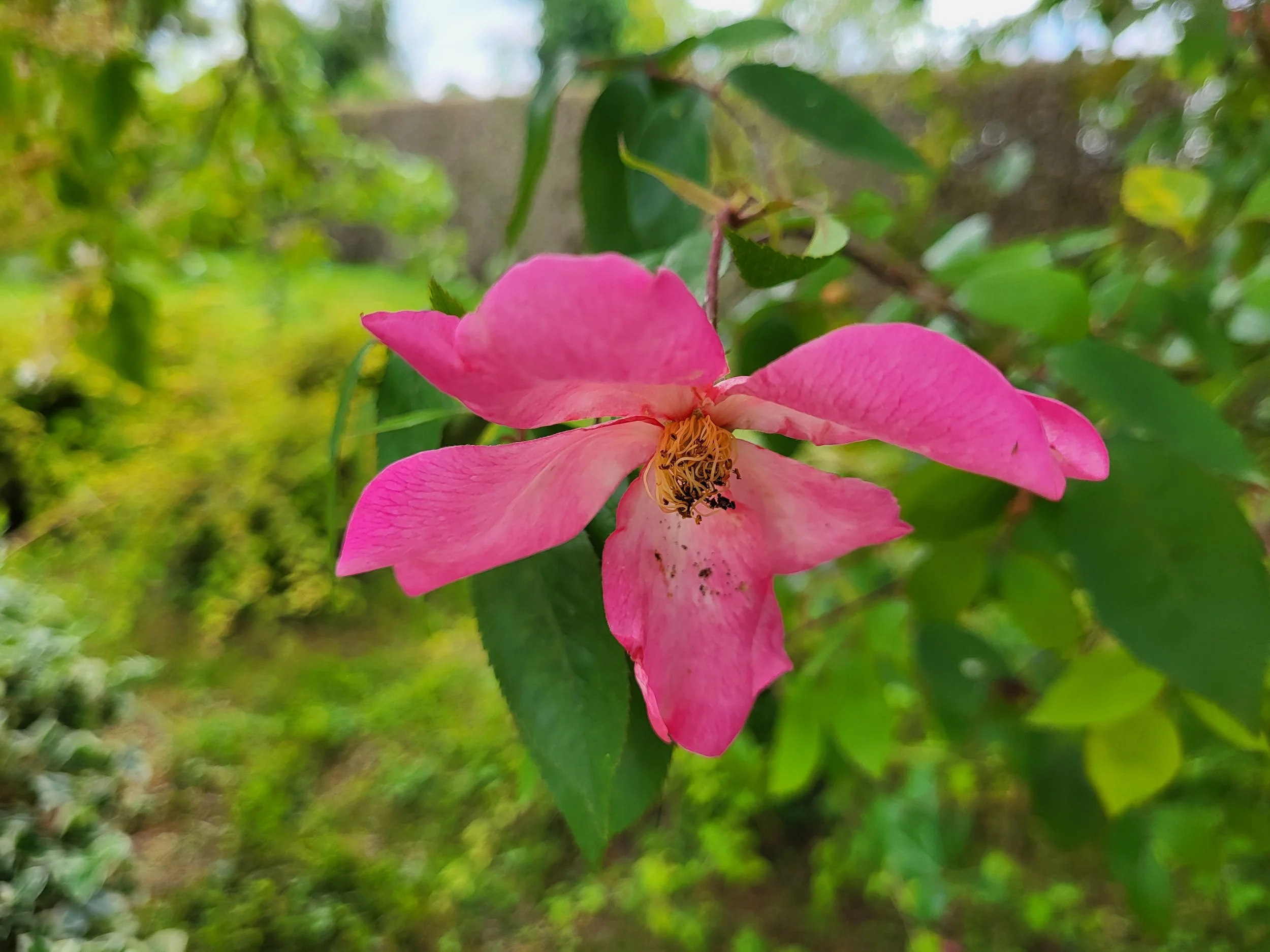July: Romantic Scented Roses for a Natural Wild Garden
Transforming your garden into a natural, wild haven can be a rewarding and visually stunning endeavor. Embracing native plants, inviting insects, birds, and other wildlife, and incorporating roses can create a charming and biodiverse landscape.
Here are some of the most romantic and scented roses perfect for a natural wild garden:
July roses mood board
Rosa ‘Mutabilis’ This captivating rose changes its color from a soft amber yellow to a rich copper pink and eventually to a deep carmine red. In full bloom, it gives the illusion of being adorned with butterflies, adding a dynamic and magical color palette to your garden.
Rosa ‘Prince Jardinier’ Favored by enthusiasts, this light pink rose exudes a highly romantic fragrance. It's an excellent choice for cut flowers, lasting 7-10 days in a vase. Named in honor of Prince Louis Albert de Broglie, its aristocratic roots bring an air of elegance to any garden.
Rosa ‘Bring Me Sunshine’ This joyful variety features deeply filled, cupped rosette blooms in a vibrant sunset orange-yellow that fades to lighter apricot tones. It's a robust, upright shrub with a complex Myrrh fragrance, perfect for adding a splash of color to semi-shaded areas.
Rosa ‘Princess Charlene de Monaco’ Known for its fragrant, ruffled blooms, this rose emits a delightful aroma that combines sweet candy, fresh fruit, and light perfume. Depending on the weather, its petals range from warm peach in cooler temperatures to light blush in summer. Blooming continuously from spring to fall, it’s a perfect addition for long-lasting beauty and fragrance. Whether in a border, as a focal point, or in a pot, this rose adds a touch of royal charm.
Rosa ‘Fru Dagmar Hastrup’ With its charming, clove-scented, light pink flowers that bloom from July to September, this rose also produces dark red hips in the autumn. Its spreading nature makes it ideal for informal hedges, attracting bees and providing rose hips. The single or semi-double blooms are especially attractive to pollinators.
Embracing the Natural Wild Garden
A natural wild garden is less structured than a traditional ornamental garden and requires minimal maintenance. It features informal paths, avoids chemical sprays and fertilizers, and promotes biodiversity. This approach allows your garden to grow organically, evolving its appearance each year as plants spread and develop. It’s a sustainable gardening method that lets nature take the lead.
Roses in the Natural Garden
Roses, despite not being purely native, have graced gardens for centuries and can beautifully integrate into a wild garden. Varieties like old roses from the Belle Époque period and English roses, which are hybrids of ancient and modern types, are particularly suitable. These roses form large, bushy shrubs ideal for naturalization.
Roses don’t need to be confined to neat borders. They thrive alongside perennials such as Alchemilla, Nepeta, Geraniums, or Salvia. This diversity enhances the roses' health and reduces the need for chemical treatments. Additionally, allowing ramblers to grow through trees, over the ground, or through natural plant hedges can create stunning visual effects.
Experimentation and Naturalization
There is no strict formula for a natural wild garden. It's about experimenting and enjoying what nature offers. Alongside wild roses, explore different combinations and appreciate the unique beauty that unfolds.
Integrating romantic and scented roses into your natural wild garden can elevate its beauty and biodiversity. Experiment with different varieties and enjoy the ever-changing, dynamic landscape that a natural garden offers. Embrace the wild, and let nature guide your gardening journey.
Follow Jana on Instagram for inspiring images of gardens and nature













